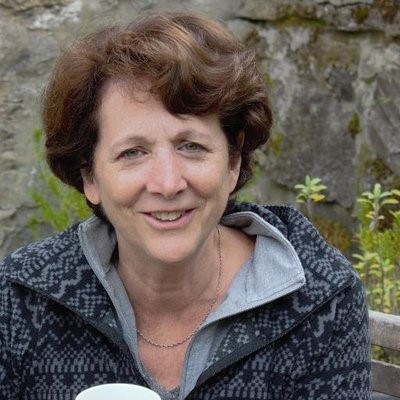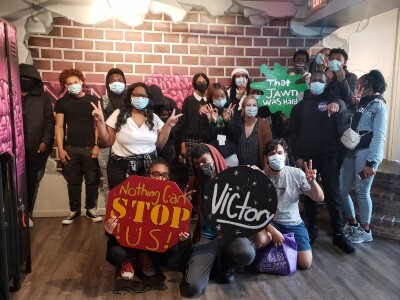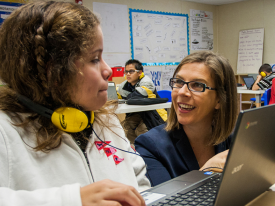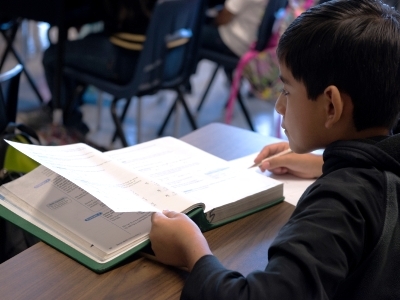Equity Responses to Private Pandemic Pods
Topics

Together, educators are doing the reimagining and reinvention work necessary to make true educational equity possible. Student-centered learning advances equity when it values social and emotional growth alongside academic achievement, takes a cultural lens on strengths and competencies, and equips students with the power and skills to address injustice in their schools and communities.
Reaching for Well-Being & Learning Support for All, Part 1
Learning pods offer face-to-face support for remote learning, socialization, and childcare but are they widening learning and opportunity gaps?
One of the most dramatic responses to this fall’s reopening of schools in remote and hybrid modes is the rapid rise of “pandemic learning pods.” Primed by the difficulties families encountered last spring in combining work with supervising their children’s online learning, those with the means to do so sought friends and neighbors to gather small “co-quarantined” groups of students in their own homes to provide face-to-face support for remote learning, socialization, and childcare.
If implemented well, a pod-based, locally-embedded element to remote schooling has a lot of potential—for individual engagement and identity development, group collaboration, and family- and community-integrated learning. And, if implemented only in communities of privilege, it will only widen existing learning and opportunity gaps. Even as the movement emerges, many are taking the opportunity to rethink how this model could serve all of our priorities in public education, not just represent an escape valve for families of privilege who are trying to ensure a decent education for their own children in a time of crisis.
Proliferation of Private Learning Pods
As J. Li’s now-famous July 17 Facebook Pandemic Pods post about the Bay area noted,
“Startups have nothing compared to thousands of moms on facebook trying to arrange for their kids' education in a crisis with zero school district support...I have never seen an industry crop up and adapt so fast... Trends that would typically take months or years to form are developing on the literal scale of hours.”
Most private pandemic pods are being created by groups of parents in middle class and affluent areas. They take a wide range of forms, including:
- Parent-organized pods designed to support students doing a district remote or hybrid curriculum
- Private pods where a group of parents hire an educator
- Parent co-op pods where parents share oversight/learning responsibilities
- Parent-organized pods developed as alternatives to public schooling, where parents pull their children out of district enrollment to provide full alternative learning experiences
- Parent homeschooling co-ops, led by parents themselves
- Micro-schools, where parents hire educators to provide small group learning
Pandemic pods are more popular in some geographic areas than others, but activity continues to spread as more and more school districts pivot to remote learning following spikes in COVID. The national Pandemic Pod Facebook group has over 40,000 members and over 85 local chapters, but these numbers do not include the kinds of activity being organized through highly active Facebook “local community” pages as well as by churches, synagogues, mosques, and other more informal networks.
Another indicator of the extent and seriousness of the need is the number of pre-existing companies and start-ups maneuvering to serve learning pods. These include “Bubbles” by Swing Education, a substitute teacher placement service, and SelectEd for Families, which now offers learning pod facilitators/teachers and support to create pods.
Equity Concerns
But, as J. Li continued in her initial Facebook post, “The race and class considerations [of the podding trend] are COMPLETELY BONKERS. In fact, yesterday everything was about people organizing groups and finding matches—today the social justice discussion is already tearing these groups apart.” Indeed, as the formation of pods has progressed and has been reported on more widely, the equity critique has expanded and matured to include the following aspects. (This short list of equity issues is informed by the comprehensive look in a Forbes article by Rebekah Bastian with additional input from Mother Jones and Mindshift.)
- Classism (including the cost of hiring a teacher, the availability of a parent, and availability of a suitable place for a small group to meet while adhering to COVID requirements)
- Racism (including the residential segregation legacy of red-lining, and the correlation between race and income contributing to racist elements in the classist issues above)
- Ableism (including the likelihood that the 14 percent of learners with special needs would require additional services that cannot be provided in private pods)
- Sexism (at the parental/adult level, with research findings on the preponderance of oversight of student learning falling to mothers)
- Threats to the public education system (including per-pupil funding decreases if students are un-enrolled, hiring away of teachers, and removing of parental advocacy and support)
Individual Responses to Equity Challenges
While podding parents are focused on addressing the very real needs of their children related to learning and well-being, and/or their equally valid work and child care equation, some have acknowledged and proposed ways to try to address the equity issues inherent in the trend. Some pods propose to “scholarship in” one or two economically disadvantaged students, either by direct support of the fee-paying families or through charitable funds they raise. Others have focused on “equity hiring”—hiring teachers of color or who have been laid off from districts due to budget cuts.
The reaction to these efforts has been divided, with some applauding efforts to address equity while others have deemed them performatory. Some suggested that parents instead actively advocate for additional funding to be provided directly to schools and districts to enable them to better serve their community including those with greater needs. While some have called for parents to refuse to create private pods, others highly concerned about issues of equity have declined to turn parents against parents. R. L’Heureux Lewis-McCoy, a sociology of education scholar, notes, “With every parent I’ve ever met, or ever spoken to, they are interested in having the best education for their child.... Most parents will act in the interest of their child, and you can’t tell them not to.” He continued, “I say, ‘Act in the interest of your child, and add some equity to it.’”
For those looking to create pods with equity in mind, it is well worth looking at an excellent new guidebook, Equity in Pandemic Schooling: An Action Guide for Families, Educators, and Communities. This “living document” (I accessed the Aug 4th version) was created by Erica O. Turner, a parent and Black education policy researcher, with members of the Equity in Action Committee of the Lapham-Marquette Parent Teacher Group in Madison, Wisconsin. The guide identifies four equity issues and 10 Actions for Equity in Pandemic Schooling to address them. As the guide says, “We face collective and structural problems. We need collective, structural solutions,” but individually and within local groups every person can do something toward equitable goals.
The actions range from keeping your children enrolled in your local public school to stay engaged in advocacy and safeguard per-pupil funding, to demanding new Congressional funding for schools and family supports, and backing groups already doing advocacy, especially BIPOC groups. They do not include inviting a child whose parents can’t afford to pay into a pod. Lewis-McCoy, who provided feedback on the Action Guide, elsewhere answered the question of whether to extend such an invitation like this: “To me, the answer is a partial yes with a good amount of no. That kid you invite is much more likely to satiate the individual’s feeling of charity and doing good, than actually doing them good. If you’ve been a ‘beneficiary’ you know that charity [does not equal] equity.”
“Everybody should have the ability to give their kids a basic K12 education while keeping their families physically safe and being able to themselves go to work. That last is literally what pandemic pods are all about.” –J. Li
Systemic and Community Responses to Equity Challenges
About a month and a half after her original posting, J. Li published an insightful “Pandemic Pods 2” post, entitled “This is a public problem, not a private one.” In it she explained that media attention on the initial post from the likes of The Atlantic, LA Times, and WSJ all seemed to focus on “rich parents [who] are privileged and screwing over poor parents by hiding in pods.” While she is clear that private pandemic pods are likely to widen inequality, she was disappointed that the media had failed to use her post as an opportunity to put “pressure on government to tackle it by organizing resources for all students, funding districts, providing childcare, paying people to stay home, and addressing covid.” She concludes:
“The pandemic podding situation is the CONSEQUENCE, not the CAUSE, of a fundamental breakdown in societal infrastructure. When you have breakdown, you will BY DEFINITION have inequality. It plays deeply into the capitalist fallacy to put the burden of fixing that inequality on individuals rather than institutions: government literally exists to redistribute resources in ways that individuals can't pull off organically on their own.
... Everybody should have the ability to give their kids a basic K12 education while keeping their families physically safe and being able to themselves go to work. That last is literally what pandemic pods are all about.” [Bold italics added.]
Changes in government policies and resource allocation that could positively impact equity in the longer term include those promoting universal childcare, residential integration, and financial policies from increased minimum wages to universal income. But the most important immediate response has been the movement of school districts, local government agencies, and community nonprofits to rework the pod experience starting now, to address the needs of a much larger number of students and families, including those with the highest need.
Learn more in part two of this post, The Emergence of Public and Community Learning Pods, where I provide an overview of emerging efforts by school districts and others to set up public and community pods, often called “learning hubs” or “learning centers” but addressing the same needs that private pods fulfill: safety, childcare, socialization, and learning support. This movement is in its early stages, so I also offer (a) a short list of critical issues to grapple with this year, and (b) questions worth asking about how these experiences might influence thinking about community-embedded learning and equity in the years ahead.
Image at top by congerdesign.





